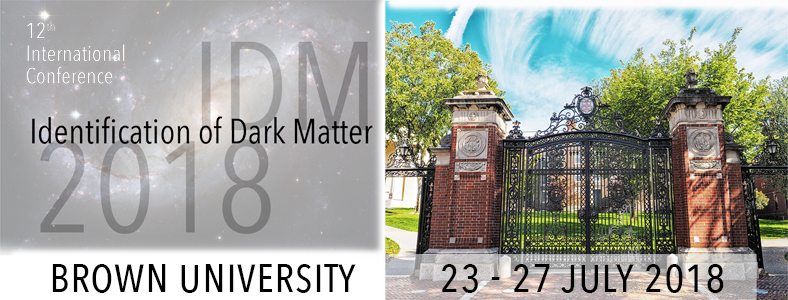Conveners
1.3 Direct Detection
- Richard Gaitskell (Brown University)
Next generation liquid xenon TPCs are poised to increase our sensitivity to dark matter by more than an order of magnitude over a wide range of possible dark matter candidates. In this talk I will describe an idea to expand the reach and flexibility of such detectors even further, by adding helium to the xenon to enable searches for very light dark matter and combining high and low Z targets...
The SuperCDMS SNOLAB experiment will search for low-mass dark matter particles at SNOLAB, the deep underground laboratory near Sudbury Ontario Canada. The new generation of SuperCDMS germanium and silicon detectors will be tested for functionality in facilities operated by the SuperCDMS collaboration in laboratories above ground. However, the background radiation in these facilities is very...
The primary advantage of the bubble chamber technology for dark matter detection, as used by the PICO collaboration, is its simultaneous sensitivity to nuclear recoils from dark matter interactions and insensitivity ($\sim 10^{-10}$) to electron recoil backgrounds. Previously published data in CF$_3$I indicated that the probability of nucleation for a single electron recoil scales with the...
The nature of the dark matter thought to make up most of the matter in the universe is unknown. It may consist of new particles from beyond the standard model. For close to two decades, the DAMA experiment has claimed to have detected such particles. This claim is controversial, in particular because there is no accepted model for the background radioactivity in DAMA. One major unknown is the...
Liquid xenon is one of the most promising targets for WIMP dark matter direct detection. Above 10GeV, the most stringent limits on WIMP-nucleus cross section have been established by the LUX, XENON1T, and PANDAX-II collaborations, by using the technology of the two-phase xenon time projection chamber. In addition, several experiments using the same technology are in development, in particular...
We systematically approach the topic of signal diversity and model discrimination for a variety of future dark matter (DM) direct detection experiments. Firstly I introduce the Euclideanized signal method which will allow for a "benchmark-model-free” discussion of optimal experimental design. Secondly, I will present an intuitive way to quantify the sensitivity of experiments in terms of the...
We analyze the WIMP search data from the Large Underground Xenon (LUX) experiment 2014-2016 WIMP search run (a 33,480 kg-day exposure) under a non-relativistic effective field theory (EFT) framework. The WIMP nucleon coupling is investigated for fifteen different effective operators individually. The analysis of several of these operators motivates an expansion of the WIMP search energy...
